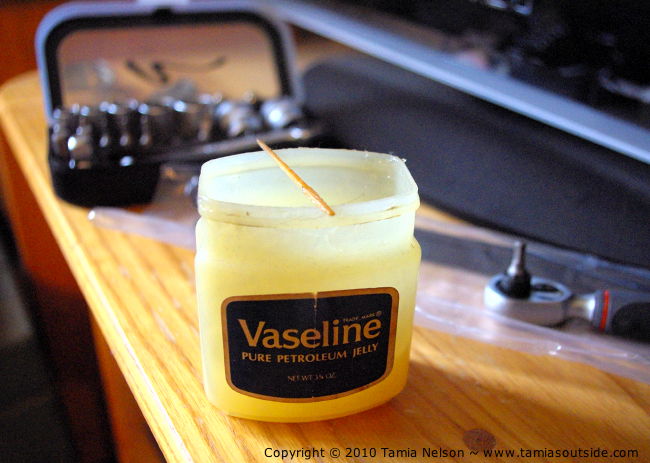Rust isn’t your friend if you ride a bike. But help is at hand, and you’ll find it in a surprising place&hellip.
______________________________
by Tamia Nelson | October 4, 2014
My uncle has been a mechanic all of his life. If it has four wheels, he can fix it. When I was a little kid, I used to spend hours watching him working on his car, and I was fascinated by the gleaming array of sockets and wrenches in his fire-engine red steel tool cabinet. Their shiny state was no accident. He polished them regularly them with a coarse, oily rag. His hands and overalls suffered by comparison, however. Both were always black with grease. Of course, mechanical work and grease go together. My uncle bought the stuff in gallon cans, and he didn’t use it sparingly.
I don’t work on cars, but I maintain my own bikes—and Farwell’s, too, when he’s feeling lazy. (A not-uncommon occurrence!) So I also use grease. But I don’t have to buy it by the gallon. A tube no bigger than a tube of toothpaste will last me for years. How come? Well, I leave my grease gun on the shelf for many jobs. Instead, I reach for something more often associated with the bathroom than the workshop: petroleum jelly. Surprised? I know I was when, many years ago now, I came across an article in Practical Sailor evaluating a number of proprietary preservative greases in harsh marine conditions. Their surprising conclusion? Petroleum jelly outperformed the lot, and at a lot less cost. The upshot? I tried it out, using it to protect—among many other things—the engraved sideplates on a fine sidelock double.
No regrets. I was sold. And what works on marine hardware and firearms works equally well on bikes—even bikes ridden through salty slush. Don’t get me wrong, though. We’re talking corrosion prevention, not lubrication. I stick to the high-priced spread in my grease gun when it’s time to overhaul my bikes’ bearings. And I don’t use petroleum jelly on my chain, either. (I describe my chain maintenance routine in “Chain Reaction: The Good, the Bad, and the Ugly.” The executive summary: Shimano HypoSpitt for clement summer conditions; Finish Line Cross Country for winter and wet.) But petroleum jelly is perfect for greasing screw threads—one frozen fastener on a water-bottle cage will convince you that this is worth the trouble—and protecting the heads of steel cap screws and other fittings. It also works well on chromed steel seat posts and ‘bars. (Never grease steel rims, though. You want your brakes to grab, not slip!) You don’t have to gob it on. A little goes a long way. The jar in the picture below is 10 years old, and there’s still about an ounce left.

Planning on riding your bike through the winter? No local bike shop? Or maybe you just like to do your own work? Then pick up a small jar of petroleum jelly the next time you’re in the HyperMart—the store brands work fine, by the way—and put it in your tool kit, ready for the next time you have to replace a fitting or notice rust on the head of a screw. And remember, a little dab’ll do ya!

